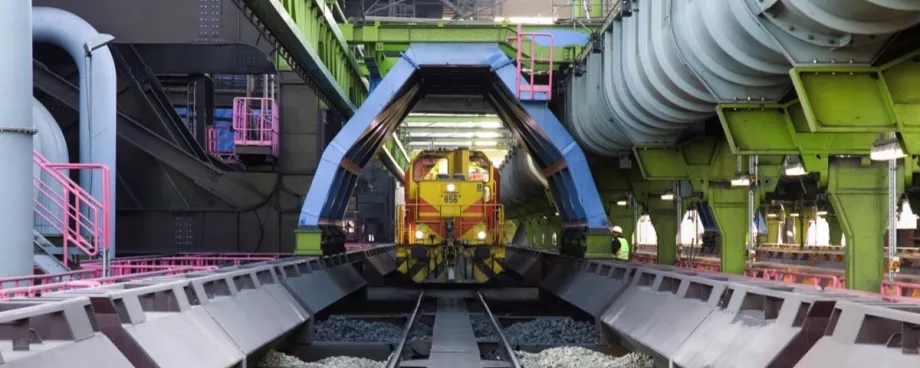(From the archive of ”bulk solids handling", article published in Vol. 32 (2012) No. 5 , ©2012 bulk-online.com)
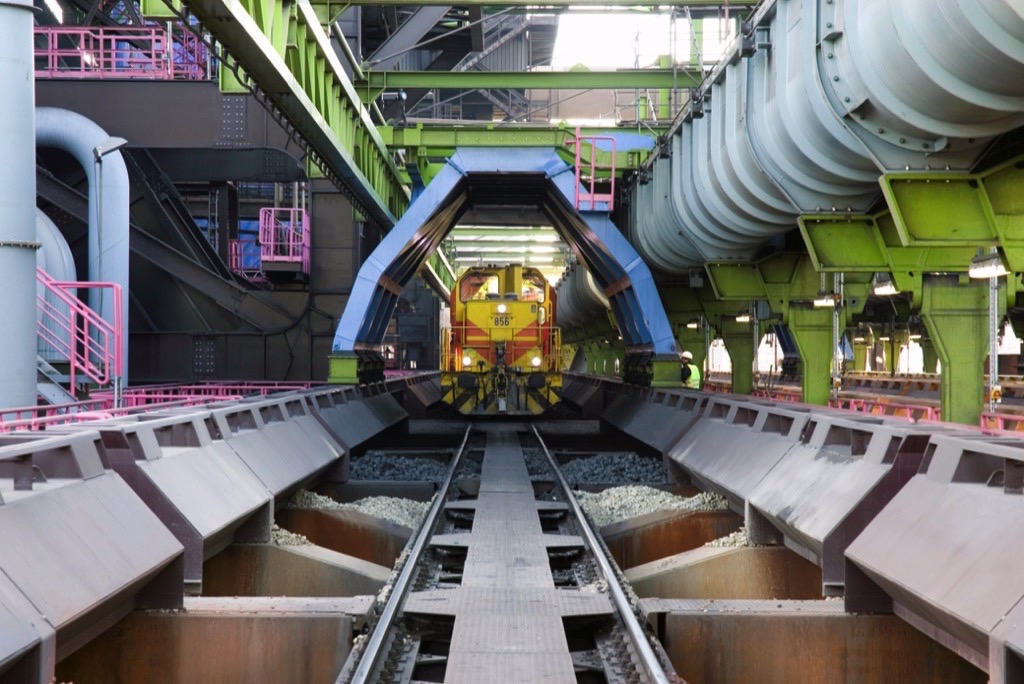
Constantly rising environmental protection requirements to reduce fine dust emissions on bulk cargo trans-shipment set new standards to integrated steel mill operators. A worldwide unique mobile high-performance dust removal facility for bulk cargo unloading jointly developed by Uhde Services (ed.: now thyssenkrupp Industrial Services) and ThyssenKrupp Steel Europe has been in operation since January 2008 on the elevated railway bunker unit in the blast furnace operations at Duisburg-Hamborn in Germany, see Fig. 1.
Introduction
The blast furnaces no. 8 and no. 9 at the ThyssenKrupp Steel Europe site in Duisburg-Hamborn, Germany, receive their required raw materials supplies through an elevated railway bunker unit which consists of 64 day-capacity bunkers, see Figs. 2 and 3.
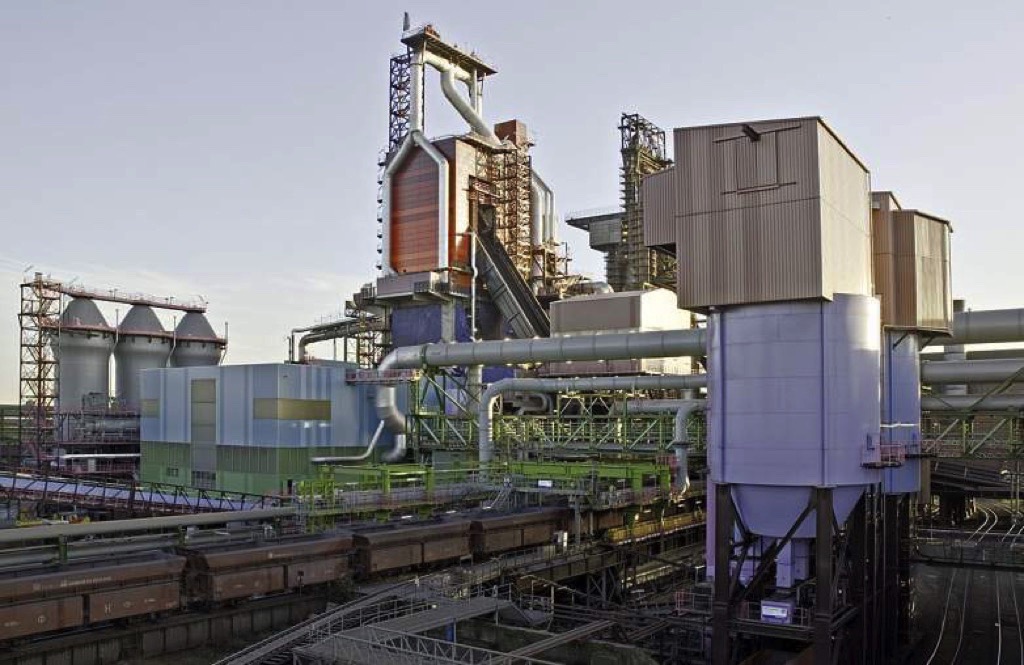
Raw materials are delivered in goods trains, allocating to these goods-trains – depending on the type of raw material delivered – one of the three leading-in tracks to the elevated bunker unit where the raw materials are dumped into the day-capacity bunkers.
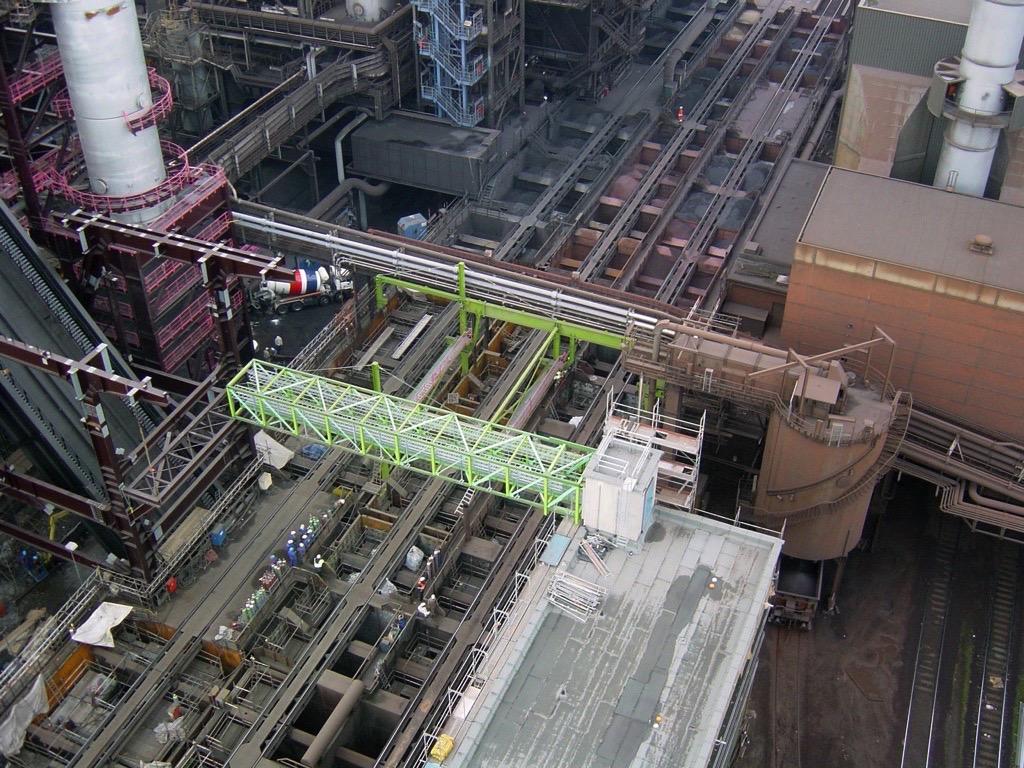
The transshipment of material performed each day through these 64 day-capacity bunkers amounts to approx. 18,000 tonnes.
Project Objectives
In the course of the new construction of blast furnace no. 8, protection of the environment from fine dust emissions called for the development of an ultra-modern dust capture system for the elevated railway bunker unit.Fine dust emissions evolving on wagon unloading were to be captured directly with this dust capture system and to be passed on in a controlled manner to the central filter station.This new system had to be integrated into the elevated railway bunker unit built at the beginning of the 20th century, into which only very limited additional loads may be introduced.A very specific challenge was posed by the demand for developing a modular system. The aim of this approach was to make it possible to deliver the individual components in the largest possible units with the aim to keep necessary railway track blockages for pulling the components as short as possible and avoiding any interference with the running production of the other blast furnaces.Blast furnace no. 4 was to be taken out of operation after putting the new blast furnace no. 8 on the blast. Ultimately the system to be installed even made it possible to perform extensive repairs to the reservoir bunker unit during set-up.
Dust Capture Model Tests
The flow conditions of emissions evolving on dumping different materials had to be investigated precisely to ensure optimal configuration and layout of the stationary dust capture hoods, considering achievable potentials for energy savings.ThyssenKrupp Steel Europe entrusted the German company Kessler + Luch with this task. At its laboratory, this company simulated bunkers in different size as well as a wagon on a 1:10 scale and determined the optimal basic data for the stationary dust capture hoods by conducting various test series.Final operating tests were run on the bunkers before implementing these studies into practice.
3D Model and Simulation
Uhde Services elaborated a 3D-model, shown in Fig. 4, for the existing elevated railway bunker unit including all interfering edges, for example skip hoists, piping routes as well as clearance gauges of the track facilities.
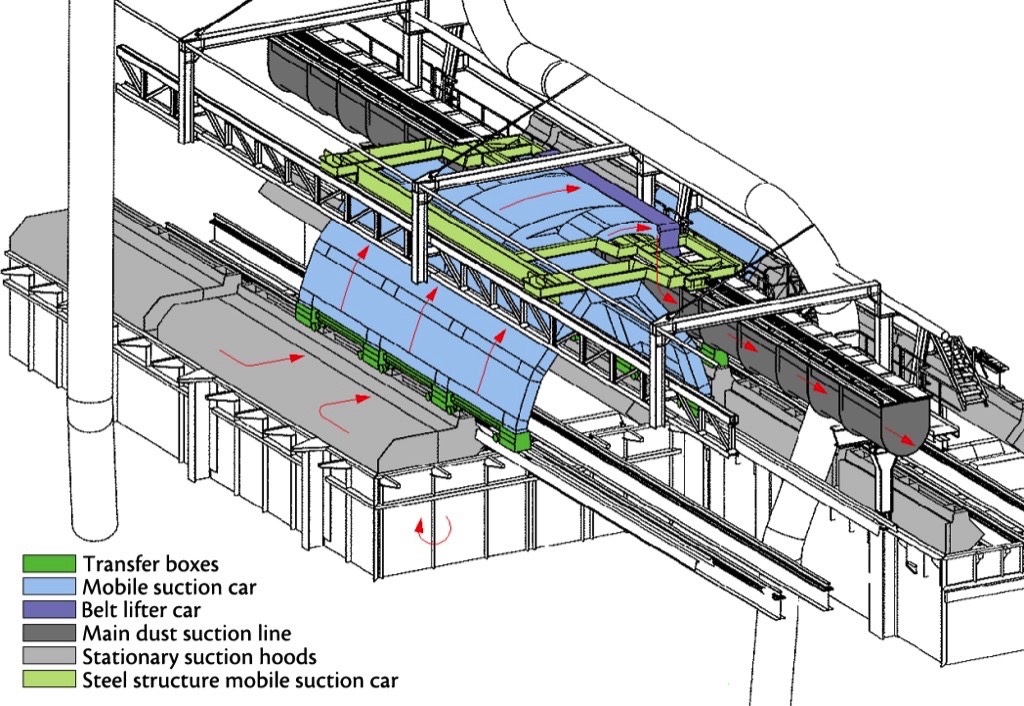
The main supporting structure of the plant was also integrated into this model to determine the span width of the suction pipe racks and runway rails for the mobile suction cars via the defined load introduction points.In the basic design of the suction cars and dust collecting ducts, Uhde Services attached great importance to an optimal fluidic design of the individual components.The model was completed when the basic data for the stationary dust capture hoods derived from laboratory-scale tests had been determined and fixed. By the aid of this model, Uhde Services developed a tailored solution concept for capturing fine dust emissions evolving during wagon unloading.
Detail Engineering
The subsequent Detail Engineering was completed within tree months for the overall plant complex. In this phase of the project, efficient 3D-engineering applications have been used to optimise the construction and functionality of the plant, including: avoidance of collision points, reduction engineering hours, and optimisation of the fabrication sequences.By implementing an adapted engineering in modular construction style, it was managed to optimise construction and installation as well as to erect this plant safely during running operation.
System Functionality
Applying a radio remote control, the mobile suction car of the allocated track is moved over the wagon to be unloaded and docked onto the two stationary dust capture hoods covering the bunker at the left and right side of the railway tracks (see Figs. 4 to 6).
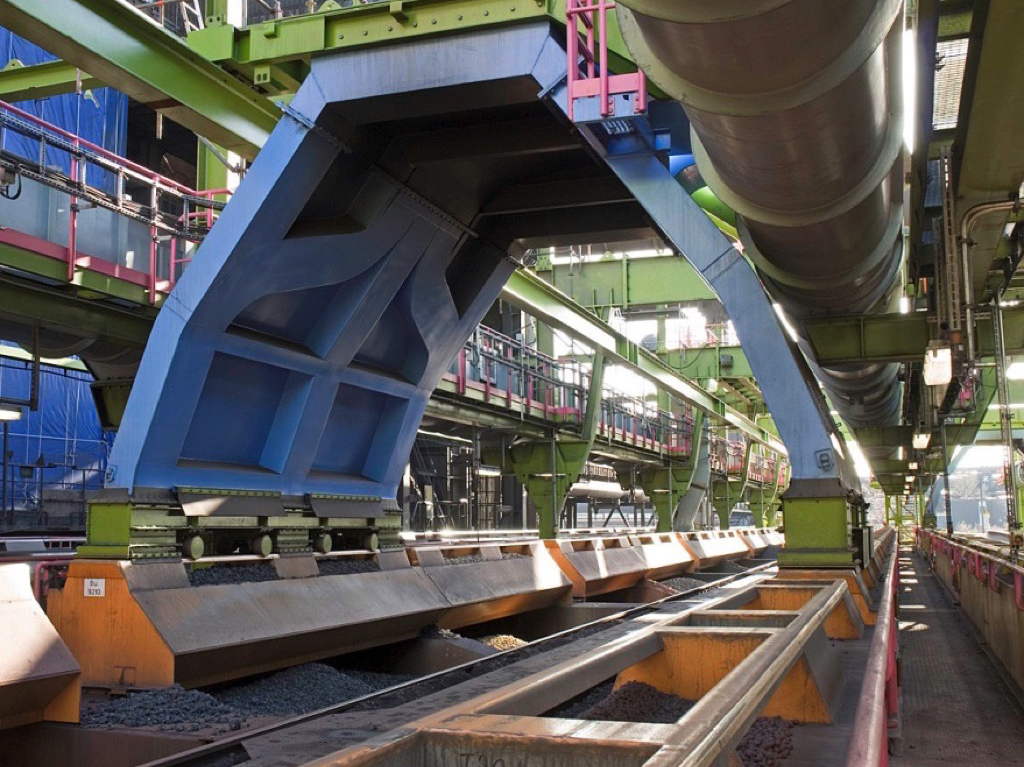
The wagon is enclosed by the suction car, thus providing additional protection from leakage of residual emissions. The seal belt lifting car diverts the rubber seal belt of the dust collecting duct, thus establishing a constant connection to the dust collecting duct which leads to the central filter station.
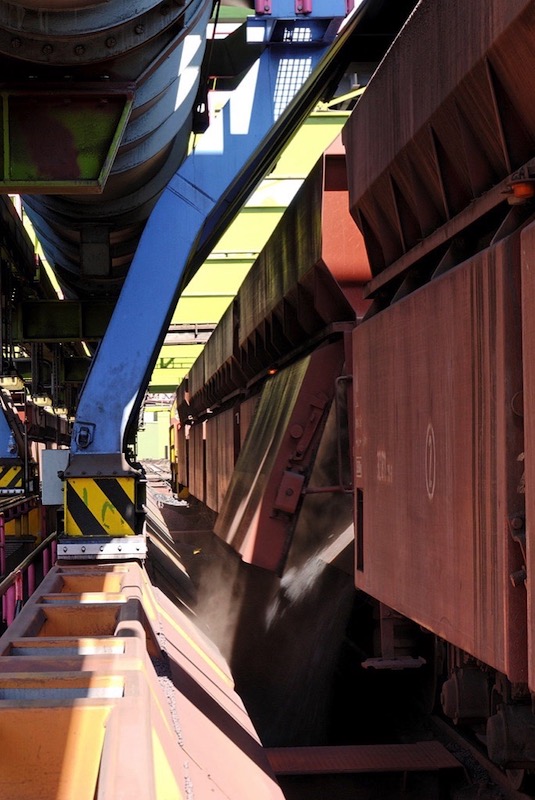
The seal belt lifting car forms the connecting link between the stationary hoods and the central dust collecting duct which is arranged in parallel to the relevant railway track.Prior to unloading the wagon, the unit driver calls on the central filter station via radio remote control to supply the necessary suction capacity. The mobile dust capture system can also be designed to work in fully automatic mode. A sophisticated monitoring system takes account of all safety aspects.
Efficient and Cost-Effective
The plant stands out for its dust capture hoods optimised in laboratory-scale tests. These hoods achieve a capturing degree ranging between 91 and 97 percent. In addition, this new system consumes approx. 50 percent less energy than conventional systems.An other advantage is that this mobile solution which obviates the need for superfluous connecting pipes including shutoff elements towards the dust collecting ducts leads to a cutback on capital investment cost as well as to an annual reduction in maintenance and repair cost by approx. 27 percent.The successful development and implementation of the mobile high-performance dust removal system for bulk cargo unloading on the existing elevated railway bunker unit at the site of ThyssenKrupp Steel Europe sets new standards in relation to an extremely efficient dust capture system coupled with very low energy consumption.Falling below statutory limit values due to the excellent degree of dust capture efficiency renders a substantial contribution to reducing fine dust contents in residential areas close to ThyssenKrupp Steel Europe in Duisburg-Hamborn.
A Note from the Editor
For all statements in this article that refer – directly or indirectly – to the time of publication (for example “new”, “now”, “present”, but also expressions such as “patent pending”), please keep in mind that this article was originally published in 2012.
| About the Author | |
| Dipl.-Ing. Andreas PetersHead of Sales & MarketingUhde Services, Germany |
■



